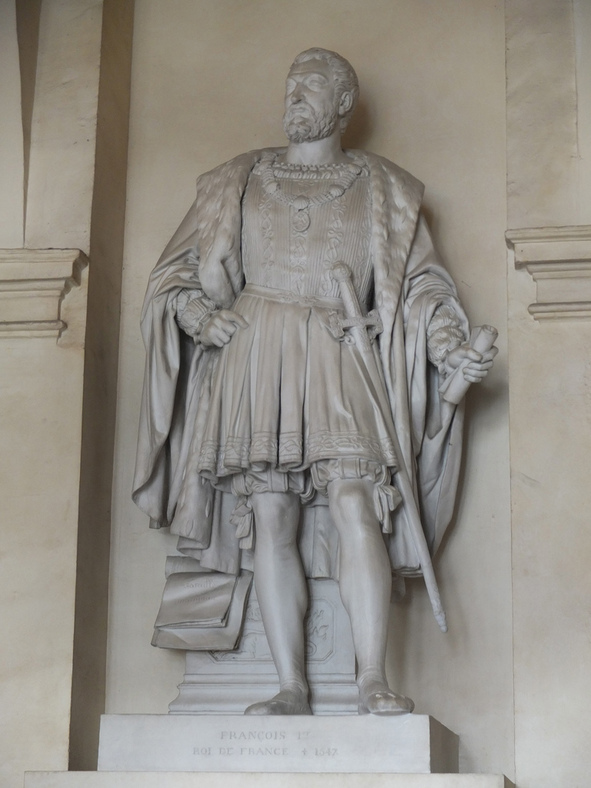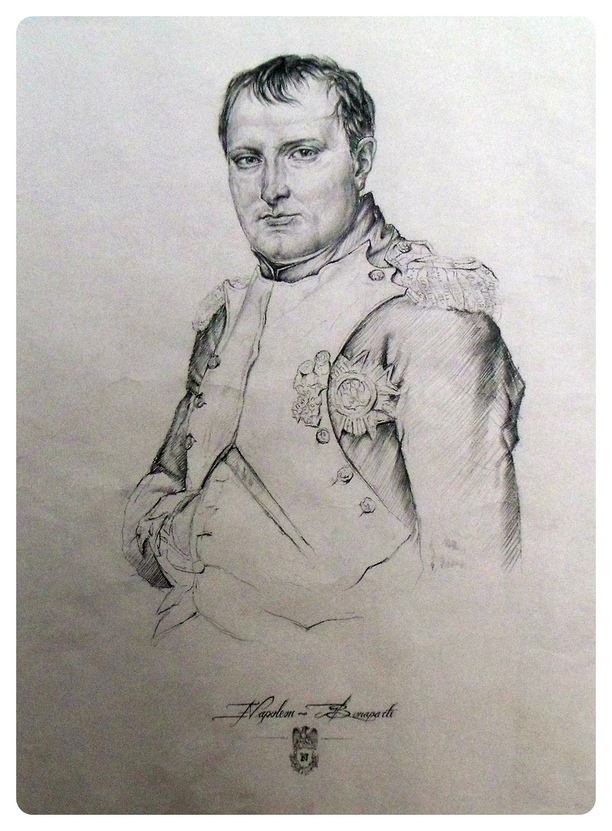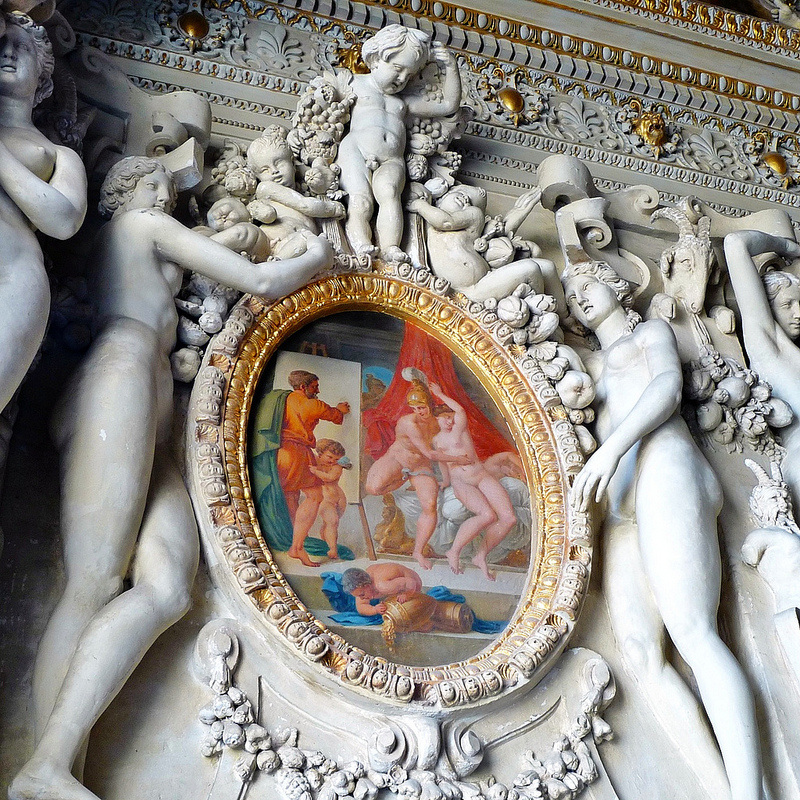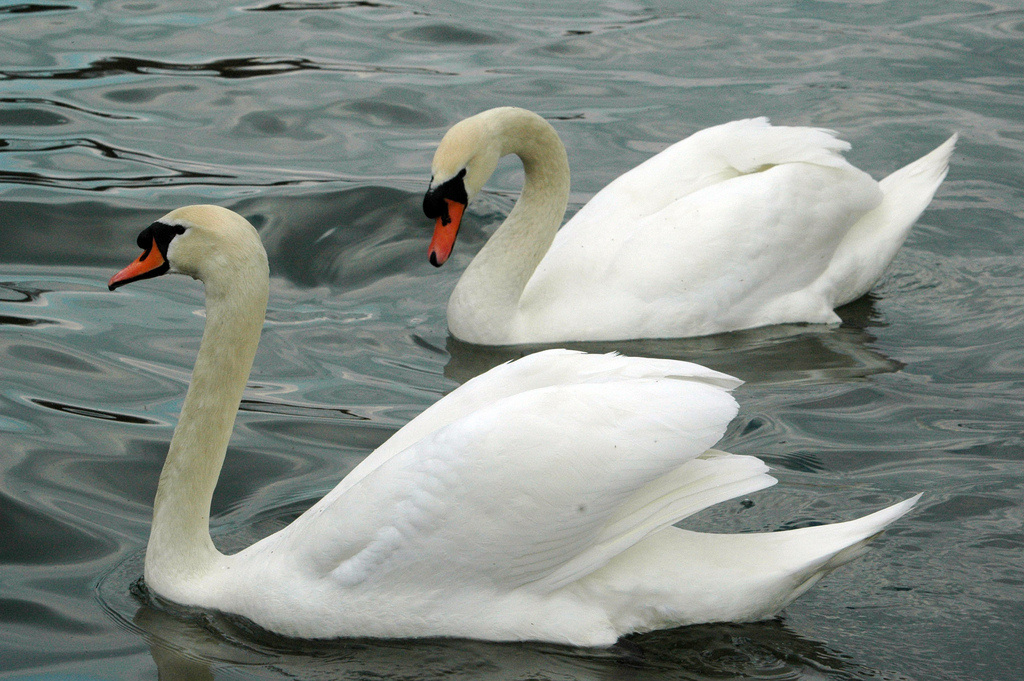As home to countless kings and one emperor, it must be Versailles, right?
Au contraire!
We're talking about the amazing chateau and estate of Fontainebleau.
Always the bridesmaid and never the bride, Fontainebleau usually gets
second billing to the fabled world of Versailles.
I'm not here to throw stones at the palace of our favorite Sun King but here's why I think Fontainebleau should be near the TOP of your your next Paris To-Do List.
This UNESCO World Heritage site, accessible to any Paris traveler,
(a 40-minute train ride away from the gare de Lyon), was born in the 12th Century
as a medieval hunting lodge. It took on new life when King Francois I transformed it into his preferred residence in the 16th Century. He longed to create a "new Rome" at Fontainebleau, importing some of Italy's best Renaissance artists and architects.
King Francois I is most famous for his stealthy courting of Leonardo Da Vinci, finally convincing the painter/sculptor/poet/scientist/inventor to leave the Italian state in order to shed his grace and legacy on France. But what is less known is that Francois set his cap (or should I say crown) on a number of other Italian artisans in his quest to make his French kingdom into the Renaissance capitol of the world.
You may well wonder exactly what is The Renaissance.
I've always found it a bit confusing because it refers to a period that
advanced a re-birth of culture from the days of antiquity.
They were trying hard to put the bad old days of medieval decline behind them.
In an effort to create modernity, they looked to history long BEFORE the dark ages of medieval Europe, the years where Greece and Rome were superpower superstars.
It seems a bit perplexing to look backwards in order to look forward but that's exactly how they re-invented art, architecture, literature, language and philosophy, beginning first in Italy, ultimately finding the way to France via King Francois I.
When Europe was transformed from a medieval swamp into a Renaissance marvel, the King of France naturally wanted to be front and center. Fontainebleau became his "baby" -- his personal favorite among a long list of residences he fought to restore (Amboise, Chambord, Blois and the Louvre just to name a few).
The results of his thoughtful effort are fantastic. Hunting lodge begone! This is a graceful palace, both dignified and resplendent. More than 1500 rooms make for more of a city than a chateau. The murals, chandeliers and stucco relief sculpture will immediately fight for your attention. Before long you'll be tempted to stand on your head to gawk at the decorated ceilings. Tapestries by the dozen compete for best of show and in no time you'll be tempted to go for a joust
or a spot of archery, transfixed by this new old world.
au revoir to his tired but loyal troops before going into exile.
Can't you picture that scene?
"I go, but you, my friends, will continue to serve France.
Her happiness was my only thought. It will still be the object of my wishes.
Do not regret my fate; if I have consented to survive, it is to serve your glory.
I intend to write the history of the great achievements we have performed together. Adieu, my friends. Would I could press you all to my heart."
Napoleon Bonaparte – April 20, 1814
The day we visited, we were lucky to see a troop of costumed actors as they readied for a re-enactment of those times. It was on a Sunday with beautiful blue skies, so it was busy but not crowded. Our visit felt more like dropping by a
rich uncle's villa than touring an iconic landmark. The pace was slow, a welcome relief from that horrible herding effect you feel at some other well-known sites.
From 1530-1610, it served as forerunner to the more famous Gobelins Factory.
The tapestry works nearly overshadow paintings at this chateau,
again setting it apart from Versailles.
Fontainebleau inspired Francois I in his quest to guide his kingdom to a modern age. Here he plotted exploration of the New World, standardized the French language and promoted a civilized society, encouraging cultural growth and activity.
The arts were nurtured under his rule with a passion for
poetry, dancing, philosophy and music.
Even today, Fontainebleau serves as a backdrop for learning.
The chateau is now occupied by the Ecole d'Art Américaines, established by General Pershing at the end of WWI. It includes a music conservatory that has been served by a long list of famous composers and musicians including Maurice Ravel, Igor Stravinski, and Arthur Rubenstein to name as few. The Ecole des Beaux Arts stresses architecture in particular and together, the Fontainebleau Schools nail it as another winning collaboration between France and the United States of America.
John D. Rockefeller, was instrumental in yet another restoration effort.
He offered millions of dollars to the French for the much needed re-hab after
World War I (also used for the chateau of Versailles and the Cathedral of Reims), just a portion of an estimated $537,000,000 legacy of philanthropy over his lifetime.
The French government rewarded him with their most prestigious merci,
the Grand-Croix de la Legion d'honneur.
to the average Parisian as those of Versailles.
The "Bleau" as they lovingly refer to it, offers rock climbing, hiking and bird-watching to all those wishing for some fresh air and an escape from the city.
There are over 65 square miles of greenery, including oak, pine and beech trees
in such abundance you'll feel hundreds of miles away from Paris.
Wildflowers, mushrooms and thousands of species of animals, birds and insects make this forest into a virtual fairytale where you'll expect to run into damsels and knights. Here you can write your own Fontainebleau story, "Once Upon a Time....."
The former royal hunting grounds offer solace to wildlife and nature, including wild boar, fox, elk and some 250 different species of birds.
Many visitors get so swept up in the beauty of the forest, they miss the chateau completely -- but that would be a shame.
Take some time also for the gardens and canals that surround the chateau.
if you don't count modern civilization."
P.J. O'Rourke
Thank goodness for the Renaissance.
Thank goodness for Francois I, Napoleon B. and John D.
Fontainebleau's facelift offers a grand opportunity to
discover another time, another place
in beautiful France.













 RSS Feed
RSS Feed
